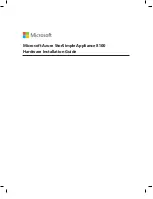
NEXPEED NBG440 User’s Manual
NexComm Systems, Inc. 96 PAGE
Configuring SNMP
As one of the most popular protocols for the network trouble management, the SNMP (Simple
Network Management Protocol) provides users with various kinds of information regarding the
network equipment and their failures with help of communication between the SNMP manager
and agent.
The router provides SNMP agent support and support for standard as well as MIBs (MIB1 and
MIB2, Internet-standard MIB contains only essential elements such as system, interface,
addrressing, protocol (e.g., IP) and SNMP objects). The active SNMP agent within the router
accepts SNMP requests for status, statistics and configuration updates. Communication with the
SNMP agent occurs over the LAN or WAN connection.
Any management application using SNMP over UDP/IP has access to the local SNMP agent.
SNMP network management tools vary but often have features to display network maps of SNMP
nodes, poll nodes at intervals, trigger alarms on thresholds, graph or list node statistic counters,
view and edit individual MIB variables.
Configuring SNMP agent
Only the SNMP manager that was registered with the NBG440 router has access to the local
SNMP agent. The ‘Community’, ‘Authority’, ‘Trap Transmission or not’ can be set differently for
each manager. If you set ‘Authentication Trap’, whenever any unregistered manager attempts
SNMP Query, the "Authentication Trap" is to be sent to all of the registered SNMP managers.
[Fig. 5-1] Schematic Diagram for SNMP Communication
NBG440
(SNMP Agent)
LAN/ INTERNET
SNMP Manager
SNMP Query
SNMP Trap
SNMP response
















































